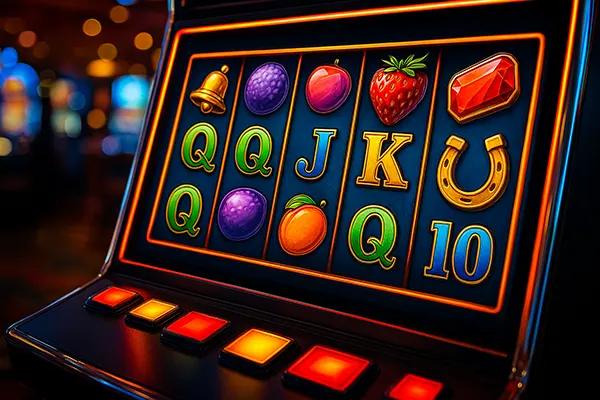
Providers of Jackpot Games: Hidden Differences in Approaches by NetEnt, Microgaming, Playtech and Pragmatic Play
Jackpot games remain one of the strongest drivers of player engagement, and by 2025 the four leading developers – NetEnt, Microgaming, Playtech and Pragmatic Play – retain their position thanks to long-term expertise and distinctive development philosophies. Although these companies often compete in the same segment, their strategic choices, technological priorities and design standards reveal essential differences that directly influence volatility, prize structures, player expectations and long-term relevance of their jackpot catalogues.
NetEnt’s Progressive Jackpot Innovations
NetEnt has historically focused on progressive jackpot networks built around stable mathematics and recognisable branding. The company’s strategy centres on creating long-lived titles capable of maintaining high activity across European markets. Games such as Mega Fortune and Hall of Gods illustrate their formula: strong visual identity, transparent prize tiers and balanced volatility designed to retain players over extended sessions. By 2025 NetEnt continues to enhance RTP stability, preserving a more predictable player return compared to many modern high-volatility jackpot titles.
One defining characteristic of NetEnt’s approach is the emphasis on multi-level jackpots that grow at a steady pace across regulated jurisdictions. The company relies on extremely robust server infrastructure, which ensures synchronised prize growth across hundreds of operators. Their focus on uniformity creates dependable gameplay experiences regardless of device or geographic location, supporting trustworthiness and long-term sustainability of the jackpot pool.
Another distinctive trait is NetEnt’s commitment to responsible gaming integration. Their 2025 jackpot catalogue includes improved reality-check tools and risk-moderation mechanisms that operate independently of operator settings. This ensures that jackpot-driven gameplay remains predictable, with clearer information about contribution rates and average trigger ranges. As a result, NetEnt’s jackpot architecture is considered one of the most transparent among major providers.
Mathematical Structure Behind NetEnt Jackpots
Jackpot mechanics in NetEnt titles are built around carefully weighted triggers rather than unpredictable ultra-rare outcomes. Their probability brackets are constructed to maintain compatibility with regulatory frameworks in Sweden, Denmark, the UK and other high-compliance markets. This mathematical strategy protects the integrity of the jackpot ecosystem while ensuring that win cycles are statistically consistent year after year.
NetEnt also maintains tighter variance boundaries than many high-risk providers in 2025. While modern jackpot games often aim for extreme volatility spikes, NetEnt tends to preserve mid-to-high volatility levels with narrower dispersion. This design gives their jackpots a more even distribution of secondary prizes, helping operators maintain a broader player base with extended session length.
Furthermore, NetEnt has intensified its work on real-time analytics, which helps maintain stable jackpot growth models. Continuous statistical monitoring ensures that the jackpot pool remains well-balanced across regions, preventing excessive clustering of contributions or abnormal jackpot spikes. These internal monitoring systems highlight NetEnt’s engineering-driven approach to jackpot design.
Microgaming’s Network Legacy and Modern Restructuring
Microgaming remains synonymous with the world’s most iconic jackpot network, thanks to the long-running Mega Moolah family. By 2025 the company continues restructuring its distribution model, focusing on fewer but more technologically advanced jackpot titles integrated through its partner studios. Their philosophy centres on global liquidity: jackpot pools are shared across numerous operators, enabling prize sizes capable of reaching multimillion-pound thresholds several times per year.
A major advantage of Microgaming’s approach is deep historical data. The provider has decades of statistical information about jackpot frequency, contribution rates and player behaviour patterns. This extensive archive allows Microgaming to tune individual games with precision, optimising volatility curves and improving long-term predictability of the prize cycle. Their approach to data-driven jackpot balancing remains unmatched in scale.
By 2025 Microgaming invests heavily in compatibility with modern markets, ensuring its jackpot framework complies with updated UKGC, MGA and Ontario regulations. Their new releases use enhanced encryption, improved RNG synchronisation and more efficient cross-operator data channels. This technical refinement strengthens the reliability of the world’s most prominent jackpot system.
The Mega Moolah Model in 2025
Microgaming’s signature model relies on ultra-high volatility and extremely long jackpot cycles, which allow the main pool to reach exceptional amounts. However, the company also diversifies its offerings with mini-tier and rapid-tier jackpots that trigger far more frequently, providing a broader engagement range for various player profiles. This layered system ensures that Mega Moolah titles remain relevant even as competing providers expand their own jackpot networks.
The provider is also refining its mathematics to achieve more consistent mid-tier rewards. While early Mega Moolah titles often featured large variance gaps, modern releases are designed with improved distribution of medium wins to encourage longer-term engagement. These enhancements show Microgaming’s interest in preserving its legacy while adapting to new player expectations.
Additionally, Microgaming’s network monitoring tools in 2025 allow for more precise prediction of jackpot milestones. Although the final trigger remains random, clustering patterns are analysed to stabilise contribution flows and prevent sudden liquidity imbalances. This analytical discipline underlines Microgaming’s long-standing engineering expertise.

Playtech’s Multi-Game Jackpot Ecosystems
Playtech has built its jackpot philosophy around interconnected ecosystems such as Age of the Gods and Jackpot Giant. By 2025 the company continues expanding multi-game networks featuring a shared jackpot pool, allowing players to access the same prize structure across numerous thematic titles. This approach prioritises high accessibility and sustained brand recognition, creating long-lasting franchises with strong player loyalty.
Another key aspect of Playtech’s strategy is advanced segmentation. Their jackpot systems are often tailored for specific regulatory markets, enabling operators to choose customised RTP ranges and volatility brackets while maintaining centralised jackpot logic. This flexibility is especially relevant in 2025, as European regulators continue refining contribution rules, transparency standards and RNG certification requirements.
Playtech is also expanding its real-time risk management and jackpot balancing tools. Their internal supervision systems adjust contribution rates and monitor cross-game liquidity levels to ensure that jackpot ecosystems remain economically stable. The company’s data infrastructure supports rapid recalibration when new titles are added to existing jackpot networks, minimising volatility-induced inconsistencies.
Game Families and Technical Design
Playtech’s jackpot games share common architectural modules: identical jackpot contribution algorithms, harmonised RNG behaviour and unified bonus mechanics across multiple titles. This modular approach speeds up development and ensures stable performance across dozens of interconnected games. It also allows Playtech to introduce new content into existing ecosystems with minimal technical disruption.
Another signature feature is the company’s approach to narrative cohesion. While most providers focus primarily on mathematics, Playtech invests in consistent thematic storytelling within each jackpot family. By 2025 their jackpot series integrate deeper lore elements, visual consistency and overarching character sets, enhancing the sense of continuity across the entire game catalogue.
Furthermore, Playtech often uses adaptive RTP frameworks, which allow operators to select from compliant RTP tiers without affecting the fundamental jackpot structure. This level of configurability ensures that Playtech’s jackpot ecosystems remain widely available in jurisdictions with varying commercial requirements.


